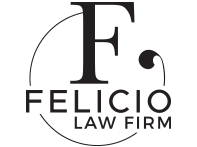
While both solicitors and barristers are professionals with legal qualifications, the difference between the two roles is often not well understood by those who don’t have a law degree. In fact, the roles are quite different, with solicitors generally engaging barristers in order to advocate for their clients in court. We’ll explain more about how these important roles differ in this article.
How the roles of solicitors and barristers differ
For most people who need a legal representative, their first contact with a lawyer will be a solicitor within a law practice. Whether it’s a wills and estate matter, a compensation claim, a family law case, a commercial issue or even a more serious criminal matter, contacting a solicitor will generally be a person’s first step in the legal process.
A solicitor can advise a person of their legal rights and responsibilities, and the steps they need to take to progress their legal matter to an acceptable resolution. A solicitor will do a lot of the ‘leg work’ involved in making a legal claim – collecting evidence, drafting correspondence, contacting insurance companies, managing files and preparing applications to courts and other bodies in relation to the matter.
Another thing a solicitor will do is contact a barrister either to represent their client as an advocate in court, or to provide specialist advice in the client’s particular matter.
In contrast to solicitors, barristers do not generally deal directly with clients and their day-to-day legal issues. A barrister is usually a specialist in arguing on behalf of the client before a judge or judges, and/or is a specialist in a particular area of the law, such as contracts, defamation, or criminal defence, for example.
In their work barristers are obliged to comply with what is known as the ‘cab rank rule’, which means they must generally accept any brief brought to them by a solicitor that is within their area of expertise, regardless of their own personal opinion of the matter.
A barrister must accept a brief from a solicitor to appear before a court in a field in which the barrister practises if:
- the brief is within the barrister’s capacity, skill and experience;
- the barrister would be available to work at the time required and is not already committed to other work which would prevent them from working in the client’s best interests;
- the fee is acceptable (the barrister is obliged to disclose the proposed fee in the same way as a solicitor); and
- the barrister is not obliged or permitted to refuse the brief. Situations in which a barrister is obliged to refuse a brief include where there is a conflict of interest.
An easy way to spot a barrister, as opposed to a solicitor, is the formal wig and gown they wear in (and also, often, to and from) court.
Briefing a barrister
The decision by a solicitor to engage a barrister on behalf of a client will often be confined to large, weighty legal matters such as a criminal trial or a major commercial dispute. Once engaged, a barrister takes instruction from the solicitor, who briefs the barrister on the intricacies of the case and provides all the relevant evidence, witnesses and other legal information. The barrister then works as an advocate in the court on the client’s behalf as well as provides specialist advice.
Deciding on whether a barrister is needed
A person who needs legal representation will be advised by a solicitor whether they also need a barrister to achieve the outcome they desire. It should be noted that the roles of a solicitor and a barrister often overlap, and legal professionals dubbed ‘solicitor advocates’ often perform a role very similar to a barrister in lower courts for matters such as drink driving, AVOs and smaller drug matters. But in general, barristers are engaged because of their experience and talent in conducting cases in court when a trial is necessary, while the solicitor manages the large administrative workload inherent in any legal matter.
If you’re unsure about the distinction between a solicitor or a barrister, and whether you need one or the other for your legal matters, contact our highly experienced team at Felicio Law Firm for more information as soon as possible.





















